
Top 5 Mescaline Cacti
Mescaline occupies the esteemed podium of naturally occurring hallucinogens along with DMT and psilocybin. The alkaloid can be found in a variety of cactus species. Here are the top 5 mescaline-containing cacti from around the world.
Mescaline cacti have their own place in the pantheon of entheogenic plants and fungi of the world, alongside such others as Banisteriopsis caapi and psilocybin mushrooms. There are numerous varieties of mescaline-containing cactus found throughout the world, with peyote perhaps being the most famous.
These cacti are known to possess psychoactive properties due to the presence of the phenethylamine alkaloid mescaline. Mescaline has been used culturally into antiquity, and is still used today on both recreational and spiritual/religious grounds. Mescaline is known to be a potent hallucinogen, but less so than psychedelics such as LSD.
EFFECTS OF MESCALINE
The effects of mescaline include altered perception, alterations in thinking patterns, altered judgements, and physical effects including dizziness, pupil dilation, and difficulties with motor coordination. Mescaline experiences are sometimes described as very visual, pleasurable, euphoric, and illuminating. However, much like other psychoactive substances, mescaline can also elicit feelings of anxiety. Mescaline achieves its effects by binding to almost all serotonin receptors within the brain. Below is a list of our top 5 mescaline cacti and their unique characteristics.
PEYOTE: THE SACRED ONE
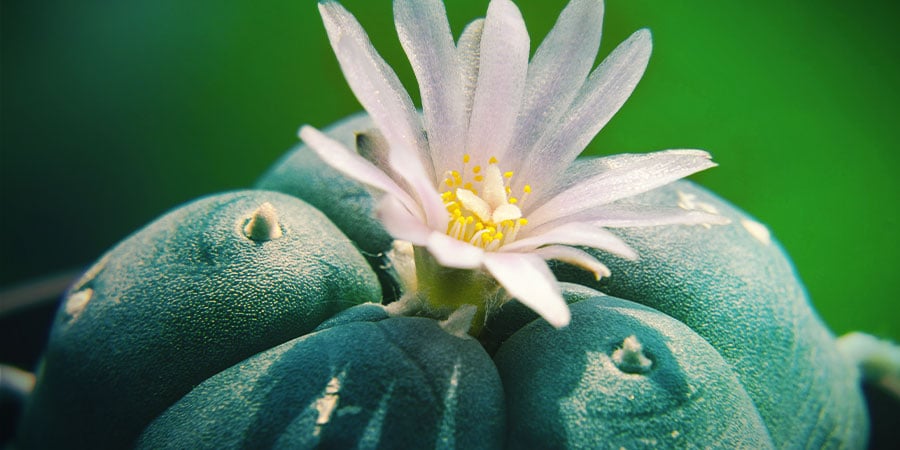
Peyote, known scientifically as Lophophora williamsii, has been used ritualistically by cultures for extremely long periods of time. The cactus was considered a living god and was used by the Tonkawa, Mescalero, and the Lipan Apache people of northern Mexico for at least 5,700 years. Its use was also reported in the southwestern US by the Comanche and Kiowa people.
Peyote is a small and spineless cactus that grows into a bulb-like mass called a button. The cactus is cultivated for its entheogenic use, however, in the wild, it has been given the conservation status of vulnerable.
Peyote can grow to heights of between 2–7cm and reach diameters of around 4–12cm. The small sizes and long grow times of the peyote cactus make it quite a valuable plant. Peyote develops aesthetically pleasing pink or white flowers with yellow and reddish tones that open during the daytime. The cactus flowers irregularly, bearing small, elongated fruits.
Peyote contains around 0.4% mescaline when fresh, and around 3–6% when dried. Peyote is available in numerous sizes from Zamnesia, ranging from 1–2cm to 10–15 cm.
SAN PEDRO CACTUS: THE CLASSIC
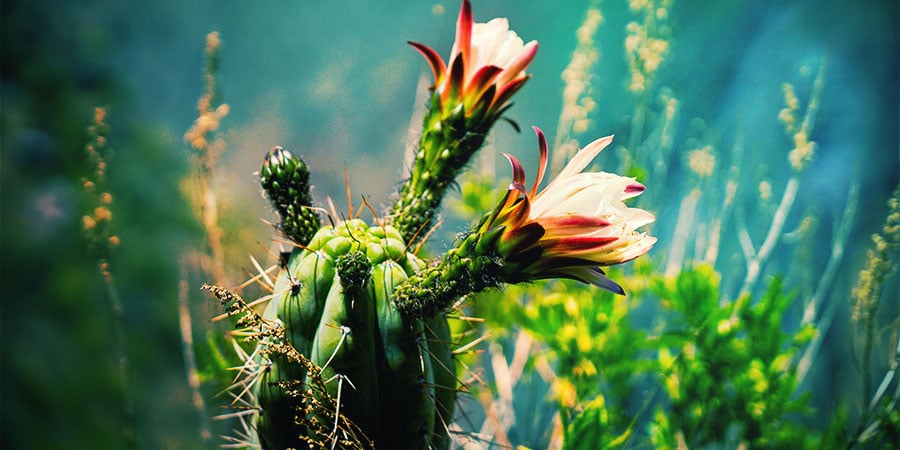
San Pedro, also known by the names Echinopsis pachanoi (formerly Trichocereus pachanoi) and Huachuma, stems from the mountainous regions of Peru and Ecuador at altitudes of 2000–3000m. It can also be found in parts of the Andes that run through Argentina and Bolivia. San Pedro has been used throughout history in shamanic settings.
San Pedro differs substantially from peyote when it comes to growing speed and size. The cactus can grow an impressive 30–40cm each year, achieving mammoth heights of between 3–6m, and diameters of between 6–15cm. The cactus produces seven yellow-to-brown spines upon each areole, yet sometimes remains spineless. It produces white flowers at the end of its stems.
Having evolved in harsh and extreme environments, San Pedro is easy to grow in most areas. The cactus has a demand for fertile and free-draining soil. These cacti only require watering once per week in autumn and once every 2–3 weeks during winter. During summer, San Pedro can be watered up to 3–5 times per week. San Pedro is available from Zamnesia in 3 sizes: small (10–11cm), medium (25–30cm), and large (50–60cm).
ECHINOPSIS ZAMNESIANA: OUR OWN CULTIVAR
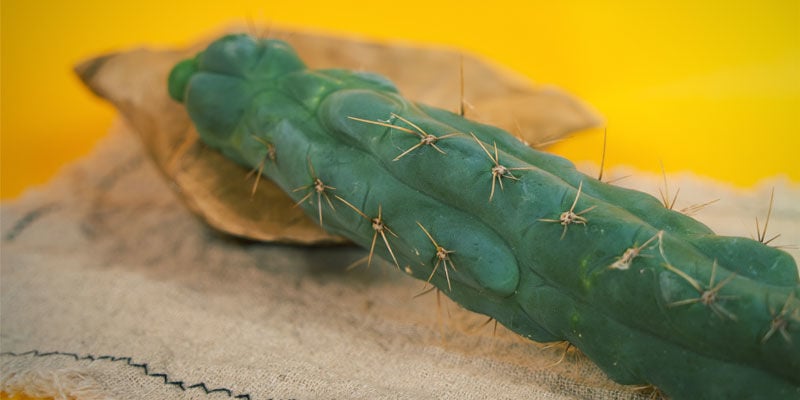
Echinopsis zamnesiana is derived from the original Echinopsis, a well-known genus of cactus that has been used for over 2,000 years by ancient shamans in religious rituals. By ingesting a small amount, it is said to have rid users of evil spirits and allowed good ones to enter. Now, thanks to Zamnesia, we have Echinopsis zamnesiana—a special variant ideal for modern-day use. This cactus is teeming with the psychoactive alkaloid mescaline, making for a psychedelic experience few can match.
Echinopsis zamnesiana grows long and tall, and also sports a unique look. This standout specimen develops small outcrops of spines that run the length of the cactus, giving it an otherworldly shape and appearance similar to that of Echinopsis pachanoi and Echinopsis lageniformis.
Overall, Echinopsis zamnesiana is an easy cactus to cultivate. It requires very little maintenance in comparison to the pay-off users get when they try this powerful plant.
LOPHOPHORA DECIPIENS: FASTER-GROWING PEYOTE
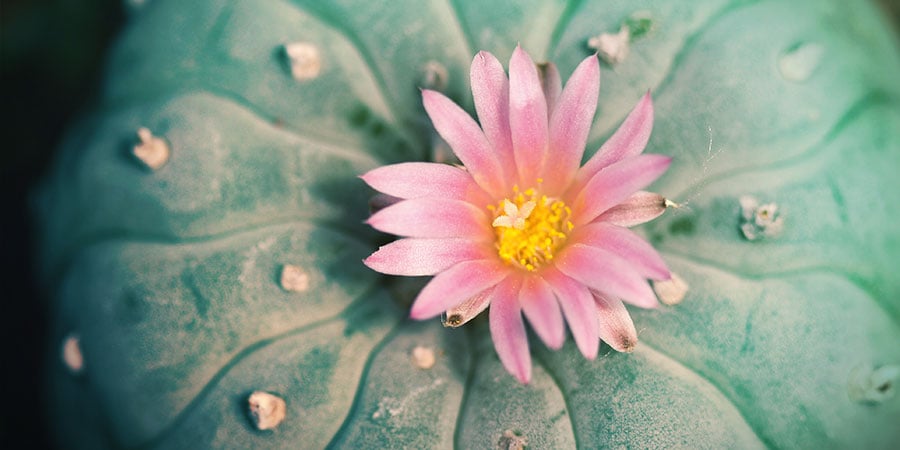
Lophophora decipiens used to be classified as a subspecies of Lophophora williamsii, but is now seen as its own species entirely. Both are still similar, but slight differences have led to this reclassification. Lophophora decipiens is known to produce larger plants sooner, a factor that might make it much more favourable to growers and psychonauts looking to harvest in a shorter amount of time. Both species also contain roughly the same quantities of mescaline.
Growers can also use cultivation methods to stress Lophophora decipiens, increasing the quantities of mescaline produced. Such methods include increasing sun exposure and heat, increasing nitrogen levels, and withholding water. Lophophora decipiens is available from Zamnesia in numerous sizes ranging from 5–6cm to 15–17cm.
BOLIVIAN TORCH: RICH IN MESCALINE
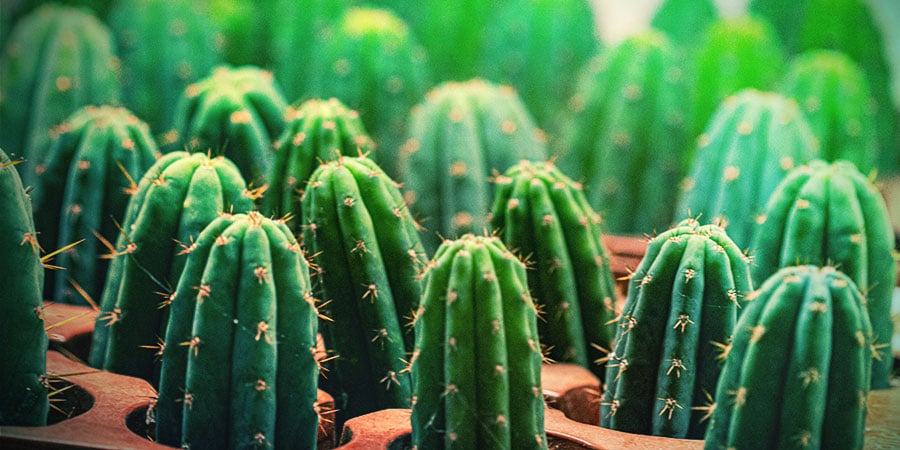
Bolivian torch, also known as Echinopsis lageniformis or Achuma, and previously known as Trichocereus bridgesii, is a cactus found within the Bolivian mountains. Bolivian torch is somewhat of a lesser-known mescaline-bearing cactus. The species is fast-growing, tall, and columnar. Just like other mescaline cacti, Bolivian torch has also been used as a psychoactive plant within indigenous shamanic ceremonies for a long period of time.
Bolivian torch can grow to heights of between 2–5m and achieve diameters of between 15–20cm. The cacti feature spines that range from honey-coloured to brown, which grow in groups of four upon nodes. Bolivian torch is reported to be one of the most potent species of mescaline cactus, containing 0.56% of the alkaloid by dry weight.
Bolivian Torch is one of the easiest mescaline cacti to grow and is highly resistant and hardy in nature. The cacti requires watering once every 2–3 weeks in the winter, and around 3–5 times each week in summer. To make sure you do not overwater this cactus, make a hole in its growing container and place the container within a shallow tray of water. The soil will absorb adequate levels of water to ensure saturation without overwatering. Bolivian torch is available from zamnesia in 3 sizes: small (10–11cm), medium (25–30cm), and large (50–60cm).
-
 6 min
12 March 2025
How to grow and care for the San Pedro cactus
Growing plants is a very satisfying endeavour—even more so when they make you trip! Here, we'll look at how to grow San Pedro—an iconic psychoactive cactus—from seeds and cuttings.
6 min
12 March 2025
How to grow and care for the San Pedro cactus
Growing plants is a very satisfying endeavour—even more so when they make you trip! Here, we'll look at how to grow San Pedro—an iconic psychoactive cactus—from seeds and cuttings.
-
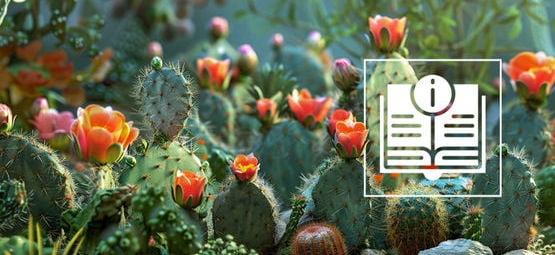 6 min
11 July 2024
The Ultimate Mescaline Cactus Guide
Mescaline is a time-honoured but often misunderstood drug. Here we aim to demystify it somewhat, and give a general overview of everything you need to know about mescaline cacti!
6 min
11 July 2024
The Ultimate Mescaline Cactus Guide
Mescaline is a time-honoured but often misunderstood drug. Here we aim to demystify it somewhat, and give a general overview of everything you need to know about mescaline cacti!
-
 3 min
2 June 2017
Mescaline Cacti Differences
Mescaline is a psychoactive compound found in several species of cacti. Each species provides its own interpretation of the mescaline experience. How do the effects differ from species to species?...
3 min
2 June 2017
Mescaline Cacti Differences
Mescaline is a psychoactive compound found in several species of cacti. Each species provides its own interpretation of the mescaline experience. How do the effects differ from species to species?...
-
 2 min
15 November 2014
The Long-Term Effects of Peyote Use on the Brain
Peyote has been used for entheogenic practices for thousands of years - but what effect does such use have on the brain?
2 min
15 November 2014
The Long-Term Effects of Peyote Use on the Brain
Peyote has been used for entheogenic practices for thousands of years - but what effect does such use have on the brain?





 United States
United States











